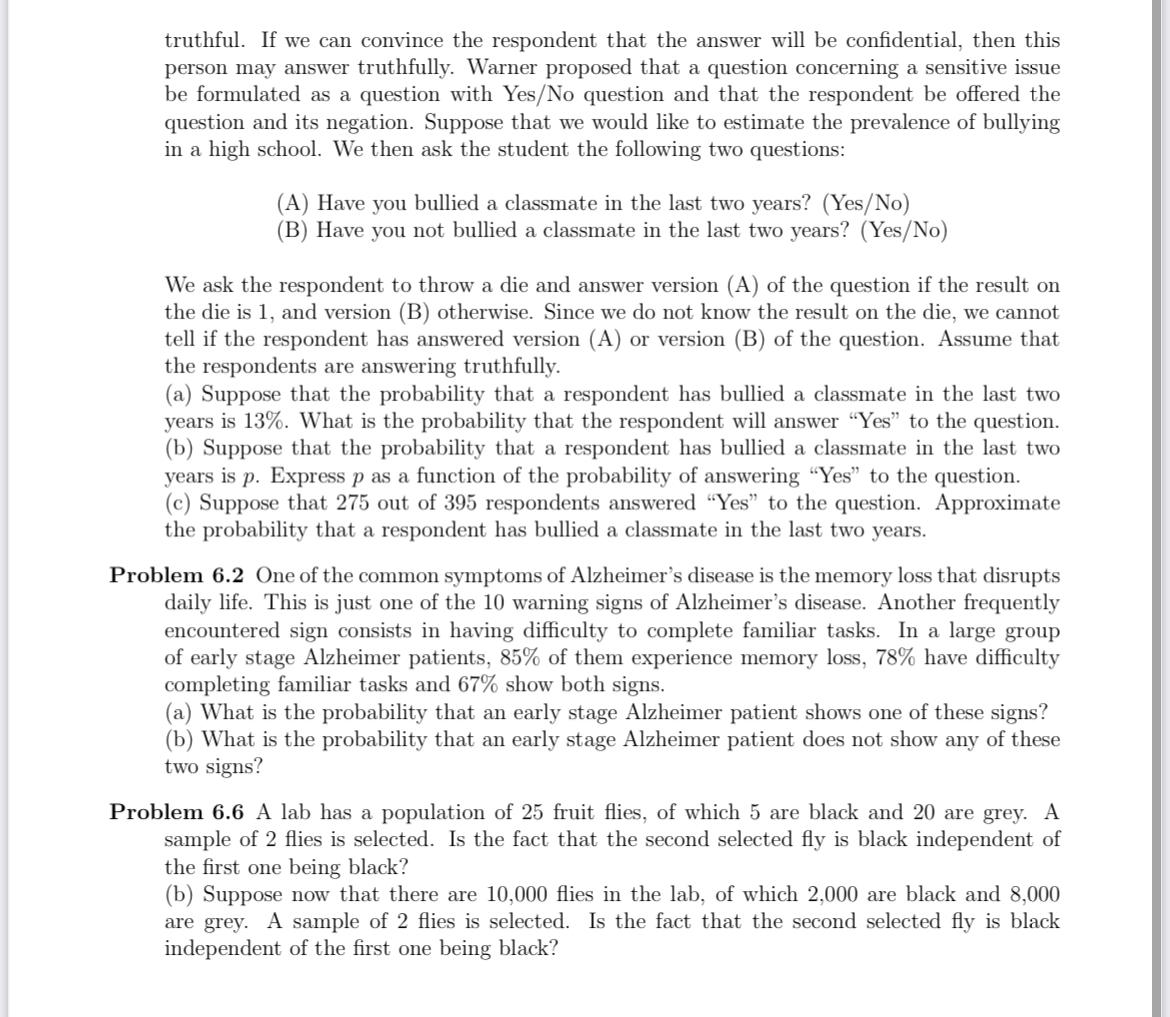truthful. If we can convince the respondent that the answer will be confidential, then this person may answer truthfully. Warner proposed that a question concerning a sensitive issue be formulated as a question with Yes/No question and that the respondent be offered the question and its negation. Suppose that we would like to estimate the prevalence of bullying in a high school. We then ask the student the following two questions: (A) Have you bullied a classmate in the last two years? (Yes/No) (B) Have you not bullied a classmate in the last two years? (Yes/No) We ask the respondent to throw a die and answer version (A) of the question if the result on the die is 1, and version (B) otherwise. Since we do not know the result on the die, we cannot tell if the respondent has answered version (A) or version (B) of the question. Assume that the respondents are answering truthfully. (a) Suppose that the probability that a respondent has bullied a classmate in the last two years is 13%. What is the probability that the respondent will answer "Yes" to the question. (b) Suppose that the probability that a respondent has bullied a classmate in the last two years is p. Express p as a function of the probability of answering "Yes" to the question. (c) Suppose that 275 out of 395 respondents answered "Yes" to the question. Approximate the probability that a respondent has bullied a classmate in the last two years. Problem 6.2 One of the common symptoms of Alzheimer's disease is the memory loss that disrupts daily life. This is just one of the 10 warning signs of Alzheimer's disease. Another frequently encountered sign consists in having difficulty to complete familiar tasks. In a large group of early stage Alzheimer patients, 85% of them experience memory loss, 78% have difficulty completing familiar tasks and 67% show both signs. (a) What is the probability that an early stage Alzheimer patient shows one of these signs? (b) What is the probability that an early stage Alzheimer patient does not show any of these two signs? Problem 6.6 A lab has a population of 25 fruit flies, of which 5 are black and 20 are grey. A sample of 2 flies is selected. Is the fact that the second selected fly is black independent of the first one being black? (b) Suppose now that there are 10,000 flies in the lab, of which 2,000 are black and 8,000 are grey. A sample of 2 flies is selected. Is the fact that the second selected fly is black independent of the first one being black







